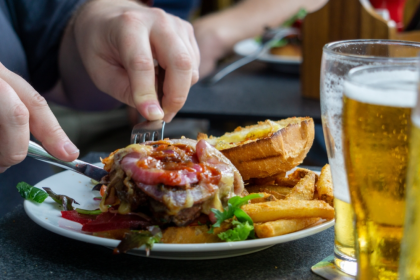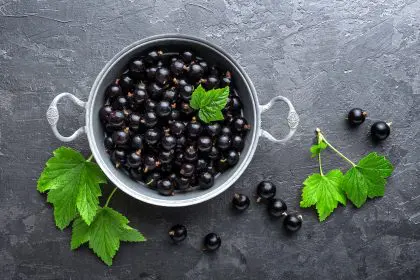You know that feeling – it’s been a long day, stress levels are through the roof, and suddenly you’re hit with an overwhelming urge for something sweet, salty, or deep-fried. Your brain seems hardwired to crave the very foods that nutritionists warn against. But what if those cravings aren’t as fixed as they feel? What if you could actually rewire your brain to yearn for kale instead of cookies?
It might sound like wishful thinking, but neuroscience suggests it’s entirely possible. Your brain’s reward system – the complex network that drives cravings – is remarkably plastic, capable of dramatic shifts based on your food choices and eating patterns. With the right approach, you can literally change what your brain considers desirable.
Why your brain currently loves junk food
To understand how to retrain your cravings, you first need to understand why your brain gets so excited about nutritionally questionable foods in the first place. It’s not just a lack of willpower – it’s biology.
Your brain evolved during times of food scarcity, when high-calorie foods meant survival. Finding concentrated sources of energy – like fat and sugar – triggered a powerful reward response, releasing dopamine and creating feelings of pleasure and satisfaction. This biological programming helped our ancestors survive by motivating them to seek out these calorie-dense foods whenever available.
Food manufacturers have essentially hacked this ancient system. Modern processed foods are scientifically engineered to deliver the perfect combination of sugar, fat, salt, and texture – known as “hyperpalatable” – creating a supernormal stimulus that triggers a reward response far stronger than anything found in nature. Your brain’s reaction to these foods isn’t that different from its response to addictive substances.
Each time you eat these hyperpalatable foods, you strengthen the neural pathways associating them with pleasure and reward. The more frequently you indulge, the stronger these pathways become, creating powerful habits that feel increasingly difficult to break.
The taste bud reset you never knew was possible
Here’s something remarkable about your taste perception – it’s not fixed but highly adaptable. Your taste buds turn over every 10-14 days, meaning you’re constantly generating new taste receptor cells. This biological reset provides a perfect opportunity to influence how you perceive flavors.
When you consistently consume highly processed, intensely flavored foods, your taste receptors become desensitized – requiring increasingly extreme flavors to register the same level of satisfaction. It’s similar to how constant exposure to loud music can dampen your hearing sensitivity.
The good news is that this process works in reverse too. When you reduce your consumption of artificially intense flavors, your taste sensitivity gradually returns. Many people who decrease their sugar intake report that foods they once enjoyed now taste uncomfortably sweet. Their perception literally changed as their taste receptors regained sensitivity.
This recalibration typically takes about two weeks – coinciding with the natural turnover of taste buds. During this transition period, healthy foods might seem bland and unsatisfying. But push through this phase, and you’ll experience a revelation as your taste perception shifts. Suddenly, an apple tastes intensely sweet, and you can appreciate the complex flavors in vegetables that previously seemed boring.
The dopamine pathway that drives your food choices
At the heart of your food cravings is dopamine, a neurotransmitter involved in motivation, pleasure, and learning. Contrary to popular belief, dopamine isn’t just about pleasure – it’s primarily about wanting and anticipation. It drives you to seek out rewarding experiences based on previous associations.
When you eat something your brain categorizes as rewarding, dopamine reinforces the neural pathways connecting that food with positive feelings. These strengthened connections make you more likely to crave that food in the future, especially in similar contexts or emotional states.
The key insight is that these dopamine pathways aren’t selective about what foods they can respond to – they’re trainable. While they currently might light up for pizza and ice cream, they can be reconditioned to activate for healthier options through consistent exposure and positive associations.
Research using brain imaging has shown that people can develop heightened reward responses to healthy foods over time. Participants who followed a consistent healthy eating pattern eventually showed increased activation in reward centers when viewing pictures of nutritious foods – their brains had literally rewired to find these healthier options more appealing.
The habit loop you need to understand
Cravings don’t exist in isolation – they’re embedded in habit loops that include triggers, behaviors, and rewards. Identifying and modifying these loops is crucial for changing what foods your brain desires.
A typical craving cycle starts with a trigger – perhaps stress, boredom, specific locations, or even certain people. This trigger activates your brain’s habit circuitry, creating the urge for the rewarding food you’ve associated with that situation. After consuming the food, the reward reinforces the entire cycle, making it more likely to repeat next time.
Breaking this loop requires awareness of your specific triggers and deliberate creation of new response patterns. When you consistently pair a trigger with a different, healthier response, you gradually weaken the old neural pathway while strengthening a new one.
For example, if you always crave chips when watching TV, you might initially substitute with something less processed but still satisfying, like lightly salted popcorn or nuts. Over time, this new association weakens the TV-chips connection while building a different response to the same trigger.
The most successful approach doesn’t rely on willpower alone but focuses on creating new habit loops that eventually become as automatic as the old ones. Your brain is a habit-forming machine – the key is directing this power toward healthier patterns.
The unexpected timeline of craving transformations
Changing your food cravings isn’t an overnight process, but it happens faster than most people expect. The journey typically follows a predictable timeline with several distinct phases.
The first few days of choosing healthier options are often the most challenging. Your brain, accustomed to intense rewards from hyperpalatable foods, registers the change as deprivation. Cravings may intensify temporarily as your reward system protests the new regime. This is normal and signals that change is beginning.
Around days 5-10, many people experience what nutrition researchers call the “taste bud transition.” Foods that once seemed bland begin developing more complex flavors as your taste sensitivity increases. Simultaneously, formerly appealing processed foods may start to taste artificial or excessively sweet.
By the two-week mark, most people report significantly reduced cravings for their previous trigger foods. This coincides with the complete turnover of taste receptor cells and the formation of new neural pathways associating healthier foods with reward.
The one-month milestone often brings a psychological shift – healthy eating begins feeling less like a chore and more like a preference. Many people report genuinely desiring nutritious foods and finding less appeal in items they previously craved intensely.
After three months of consistent healthy eating, these new preferences typically become the default. Your brain has effectively rewired its reward pathways, and what once required conscious effort now feels like your natural inclination.
Strategic exposure creates new neural pathways
A central principle in retraining your brain is consistent exposure to healthy foods in positive contexts. Each positive experience with nutritious food strengthens the neural pathways associating those foods with reward.
The exposure effect is a well-documented psychological phenomenon where repeated exposure to a stimulus increases your preference for it. This works with food just as it does with music or art – the more you encounter something in a positive context, the more you tend to like it.
Variety plays a crucial role in this process. Trying diverse preparations of healthy foods increases the chances of finding versions you genuinely enjoy while preventing the boredom that can derail new habits. Someone who “hates vegetables” might discover they actually enjoy roasted brussels sprouts with balsamic glaze or spinach incorporated into a fruit smoothie.
Creating positive associations also means paying attention to the eating environment. A rushed, distracted meal of healthy food while working won’t create the same positive neural connections as a mindful, enjoyable meal in pleasant surroundings. The context becomes part of what your brain associates with the food experience.
This strategic exposure works most effectively when it’s consistent but not extreme. Gradually increasing the proportion of whole, minimally processed foods in your diet creates more sustainable neural changes than dramatic, all-or-nothing approaches that often trigger resistance.
The emotional eating connection you can reprogram
For many people, the strongest food cravings are tied to emotional states. Stress, sadness, boredom, or even celebration can trigger powerful urges for specific foods that have historically provided comfort or pleasure during similar emotional experiences.
These emotional eating patterns create particularly strong neural pathways because they involve multiple brain systems simultaneously – not just reward centers but also emotional regulation networks. The good news is that these connections, while powerful, are still reprogrammable.
The key is developing alternative responses to emotional triggers that provide similar benefits without reinforcing unhealthy food associations. For stress, this might mean discovering that a brisk walk or deep breathing exercise reduces tension more effectively than cookies. For celebration, it might involve finding non-food rewards that create comparable pleasure.
This reprogramming works best when you acknowledge the legitimate need behind emotional eating – the desire for comfort, distraction, or pleasure – while finding alternative ways to meet that need. Simply trying to suppress the emotional response or white-knuckling through cravings rarely works long-term.
With consistent practice, your brain gradually builds new neural pathways connecting emotional states with these alternative responses. Eventually, the emotional trigger automatically activates the healthier pathway rather than the food craving.
The power of post-workout food choices
Exercise creates a unique opportunity for retraining your food preferences. After physical activity, your brain experiences heightened neuroplasticity – an increased ability to form new neural connections. This makes post-workout meals particularly influential in shaping your food preferences.
When you consistently refuel after exercise with nutritious whole foods, you create powerful positive associations. Your brain links the natural reward state from exercise – already rich in endorphins and other feel-good neurotransmitters – with the foods you consume during this window.
Research suggests that exercise may temporarily alter how your brain responds to food cues, with increased activation in regions involved in reward and reduced activation in areas associated with inhibition. This creates an opportunity to establish strong positive responses to healthy foods that might otherwise seem less appealing.
This effect works both ways – consistently choosing processed foods after workouts strengthens cravings for those items. The post-exercise state essentially amplifies whatever food associations you’re building, making your choices during this window particularly impactful for long-term preference development.
For maximum benefit, focus on nutrient-dense, minimally processed foods that support recovery while taking advantage of this neuroplasticity window. The protein shake or balanced meal you choose becomes not just fuel for your muscles but programming for your future cravings.
The mindful eating technique that rewrites cravings
One of the most powerful approaches for changing food preferences is mindful eating – the practice of paying full attention to the sensory experience of eating without judgment. This approach directly influences how your brain processes and remembers food experiences.
When you eat mindfully, you activate different neural networks than during distracted eating. Brain imaging studies show increased activity in regions associated with sensory processing and decreased activity in areas linked to anxiety and reactivity. This altered brain state creates opportunities for new learning about food.
The practice involves noticing the appearance, aroma, texture, and complex flavors of food while eating slowly and without distractions. This heightened awareness often reveals that healthy foods contain far more sensory interest than you previously noticed, while highly processed foods may offer intense but one-dimensional experiences.
For someone retraining their food preferences, mindful eating serves multiple functions. It enhances satisfaction from smaller portions, increases appreciation for subtle flavors in whole foods, and creates fuller, more detailed memories of eating experiences that influence future cravings.
The approach is particularly effective for navigating occasional indulgences without derailing progress. Mindfully enjoying a small portion of a previously problematic food often proves more satisfying than mindlessly consuming larger amounts, gradually reshaping both your portion perception and flavor preferences.
Social influences that shape your food brain
Your social environment profoundly influences your food preferences and cravings, often operating below conscious awareness. The people you eat with, their attitudes toward different foods, and the culture around eating all shape your brain’s food response patterns.
Research consistently shows that we tend to mirror the eating habits of those around us. This mimicry occurs through multiple mechanisms, including unconscious modeling of behavior and the establishment of social norms that shape what foods we consider appropriate or desirable in different contexts.
This social influence can either support or undermine efforts to retrain food cravings. Surrounding yourself with people who enjoy and value nutritious eating creates a powerful environment for positive change. Their enthusiasm for healthy options can be contagious, helping your brain form new positive associations.
Conversely, regular exposure to social circles where processed foods are celebrated and healthy eating is dismissed makes retraining much more challenging. Your brain receives constant social reinforcement for the very patterns you’re trying to change.
While completely overhauling your social circles isn’t practical, strategically increasing exposure to positive food influences can significantly impact your progress. Cooking groups, farm visits, or even following social media accounts focused on appetizing whole foods can provide the social modeling that helps reshape your food template.
Breaking the sugar-brain cycle for good
Sugar presents a particular challenge in retraining food preferences due to its powerful effects on brain chemistry. Regular consumption of high-sugar foods can create dependency-like patterns that make cravings especially persistent.
Research suggests that sugar consumption activates similar reward pathways to certain addictive substances, though with less intensity. These reward patterns can drive continued consumption despite negative consequences – a hallmark of dependency behaviors.
Breaking this cycle typically requires a more structured approach than with other food preferences. A gradual step-down in sugar consumption often works better than cold-turkey approaches, allowing your brain’s reward system to adjust incrementally rather than triggering intense cravings and potential rebound overeating.
The transition period may include temporary symptoms like irritability, fatigue, or headaches as your brain chemistry readjusts. These symptoms typically peak around days 2-5 and resolve within two weeks as your brain adapts to more stable blood sugar levels and different reward patterns.
The payoff comes as your recalibrated system develops increased sensitivity to natural sweetness. Former sugar cravers often report that fruits taste intensely sweet and satisfying, while previously appealing desserts seem overwhelming or artificial. This shift represents successful rewiring of your brain’s reward response – proof that even the most persistent cravings can be retrained.
Your brain’s remarkable plasticity means that no food preference is truly fixed. Through consistent exposure to healthier options, mindful attention to eating experiences, and strategic management of your food environment, you can literally change what foods your brain gets excited about. The cravings that once seemed like permanent fixtures of your mental landscape can transform until the foods you want are also the foods that nourish you best.















